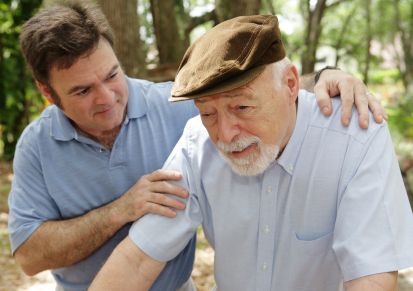Article
Report Uncovers Rising Death Rates Among Whites at Midlife, Citing Addiction, Suicide, and Pain
Author(s):
This year's Nobel Prize winner in economics and his wife uncover sad statistics on how substance abuse and suicide are taking their toll on white Americans at midlife. Princeton's Angus Deaton speculates that the trends reflect the broader picture of inequality.
This year’s Nobel winner in economics and his wife, both economists at Princeton, have uncovered sad and startling facts from CDC health and mortality data: whites at midlife who have a high school education or less are dying at alarming rates, often from drug or alcohol use or suicide, and many others are in terrible pain.
Angus Deaton, FBA, the 2015 Nobel Memorial Prize winner in Economic Sciences, and Anne Case, PhD, yesterday published a paper in Proceedings of the National Academy of Sciences, “Rising morbidity and mortality in midlife among white non-Hispanic Americans in the in 21st century.”
Case, an expert in health policy, and Deaton, whose work explores the microeconomics of consumption, found that despite advances in healthcare–which have reduced deaths from lung cancer and heart disease–whites at midlife (ages 45-54) have seen overall mortality rates increase from 1999 to 2013, which the researchers say represents an “epidemic” on par with HIV/AIDS, according to a research brief published by Princeton.
The pair documented a spike in death rates after 1998, which they link to drug and alcohol use, suicide, chronic liver disease, and cirrhosis. These bleak findings come in contrast with overall advances in healthcare and are in contrast with trends in other advanced countries, as well as declines in death rates among African Americans and Hispanics in the United States.
Case and Deaton found that the increase in death rates is largest among less educated whites–those who have only a high school diploma or less. For this group, deaths from alcohol poisoning rose fourfold and suicides rose 81%. Deaths from liver disease and cirrhosis, which are related to alcohol use, rose 50%.
All-cause mortality for this group with the least education increased 22%, while those with some college saw little change. Those with at least a bachelor’s degree saw an overall decline in death rates.
The researchers estimated that if the death rates for whites had not taken the sudden dive starting in 1998, approximately 488,500 deaths would have been avoided. They note the increased availability of opioids starting in the late 1990s. (Oxycodone first came to the United States in the 1930s, but OxyContin, which is derived from the opioid, began being manufactured by Purdue Pharma for widespread use in 1996. By 2001, it was the best-selling narcotic pain reliever in the country.)
Subsequent restrictions on prescription opioids have contributed to a widely documented heroin epidemic; overdoses have quadrupled over the past decade.
Deaton and Case note the overall declines in self-reported states of mental health and increased financial stress. They note wage stagnation, coupled with the changing dynamics of retirement savings, mean that many older US workers face feelings of economic insecurity that take a toll on their health.
Finally, the researchers note that middle-aged Americans increasingly report being in pain. One in three white Americans reports chronic joint pain, and 1 in 7 reports sciatica. Case said in the research note that the strongest morbidity effects are reported among those with the least education. This group also reported increased psychological stress, including difficulty socializing, which is considered a risk factor for suicide.
In their note, Case and Deaton said additional restrictions on painkillers are warranted, but must be viewed alongside broader solutions aimed at addressing social and economic ills. Not every part of the government seems to be on the same page. The CDC has issued high-profile warnings about opioid and heroin abuse, and President Obama recently traveled to West Virginia to call on Congress to pass a $133 million package to fund treatment.
At the same time, however, “The (FDA) recently approved OxyContin for kids,” Deaton said. “While some kids are in awful, terminal pain, and can clearly benefit from it the scope for abuse is there, especially if the pharmaceutical companies misbehave, as they have done in the past.
“But what is really happening is an epidemic of despair, that people on the bottom of the economic heap are being increasingly left out as inequality expands, then what we are seeing is just one more terrible consequence of slow growth and growing inequality.”
Â
Â

Incorporating Discussions of Cannabis Use Into Oncology Care Visits

How Patients Think About Pain May Impact Activity Levels, Study Says

